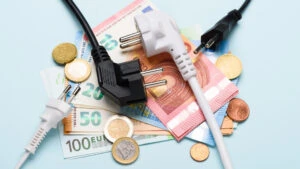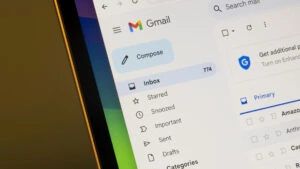A regularly maintained blog is invaluable from an SEO perspective: however, a lack of updates and planning can lead to the hoped-for success not materializing. A well-thought-out content strategy, regular updates and the targeted use of SEO tools can significantly improve visibility in search engines.
A well-maintained blog can not only boost indexing by search engines, but also enhance the user experience. In this article, I will explain the importance of a regularly maintained blog and give you specific tips on how you can create effective blog articles to explode your SEO visibility.
How blogs reach and convert your target group
A blog allows you to address a specific target group: you can attract visitors and convert them into potential customers with topic-relevant content that is specifically tailored to the needs and interests of your readers. For example, IT professionals regularly search for solutions and new technologies online. Here you can present yourself as an expert for your solutions through blog posts.
On the other hand, a well-designed blog increases brand awareness and customer loyalty: By providing relevant, well-structured and easy-to-understand information, visitors will stay on your site longer and return more often. This increases the likelihood that users will interact with your services or products and ultimately become your customers.
Top SEO position with blog articles and topical authority
Running a blog has the enormous advantage that Google and co. will increasingly perceive you as an authority on your topic through a blog – your so-called “topical authority” increases. This results in increased visibility, because as an authority it becomes easier for you to rank for keywords within your topic or expertise. When creating blog articles, you can link specifically to your most important pages on which you offer your products and services: your “money pages” or your most important landing pages.
This signals to Google that these landing pages are particularly relevant to the topic of the blog. This positions the landing pages as an authority in your subject area – resulting in significantly higher visibility through higher rankings. For example, you could write ten blog articles on different aspects of cyber security. All of these articles link to your landing page on cybersecurity solutions, where you advertise your services. This helps Google understand that your cybersecurity landing page is particularly important, which strengthens your authority in this area and increases your visibility in search results.
The perfect blog article: From research to publication
To create a successful blog article, you should first start with thorough preparation. My tip: Only write about topics that have a search volume – only these topics are actively searched for. Comprehensive content and keyword research is therefore the top priority at the beginning. If this is not done properly, the blog articles will “disappear into nothing” and not attract any visitors.
Take care not to cause keyword cannibalization when creating the blog pages. Keyword cannibalization occurs when several pages of a website rank for the same keyword and therefore compete with each other in Google, which impairs the overall SEO performance of the pages. In concrete terms, this means that you should only ever create one page for a specific searched topic. If there are also synonyms for the searched topic as search terms, these must also be integrated into the article instead of creating new pages.
If you are unsure whether a new page should be created for a search term or whether two URLs are required, you should compare two search terms online with the “SERP Overlap Tool”. You enter the two search terms into the tool for which you are not sure whether you need to create an extra page. The tool then gives you a recommendation as to whether both keywords can be covered within one page or whether a new page should be created.
You should also publish blog articles regularly and keep them up to date in order to always provide Google with positive signals. An editorial plan can help you to continuously provide and update new content. You can also keep track of your publications. Such a plan should be realistic and offer enough flexibility to be able to react to current topics and trends. A well-thought-out editorial plan ensures that you publish new, high-quality content regularly and consistently, which will have a positive impact on your rankings.
Search intent analysis is also crucial when creating text: in concrete terms, this means that you analyze the search results (perform a so-called “SERP analysis”) in order to design the content in the same way as the top-ranking competition does. This will ensure that you meet users’ expectations when they enter the search term into Google. But also make sure to provide deeper insights than the competition so that your content stands out from the competition. Your texts and headlines should be keyword-optimized to achieve the best possible visibility in search engines. The key here is to use relevant keywords in natural contexts. You should refrain from “simply spamming” keywords. To increase the user experience and the length of time visitors spend on your site, you can supplement your content with images and videos, useful tools such as calculators, etc. The increased engagement will give Google positive signals from your site again, which will help it to rank better.
Double the power: off-page SEO for your blog articles
Offpage optimization is also an essential part of running a blog in order to increase the visibility of your blog articles. External links should be regularly placed on your blog articles. These external links signal the relevance and authority of your content to Google.
By linking blog articles, we even get a “double power” here: Through the aforementioned internal linking, where you link your own products or services (or landing pages) directly in the blog article, you create a double linking structure. This means that both the blog article and the linked pages benefit from the external links. This double linking strategy strengthens the SEO position of both pages and helps to establish your most important content as an authority in your field.
Long-term SEO success through well-maintained blogs
A regularly maintained blog offers long-term benefits for your SEO strategy: it increases the visibility of your website, improves the user experience and establishes your site as an authority in your field. My advice to you: Invest time or money in a well-thought-out content strategy and always keep your blog up to date – your website’s visibility will increase in the long term. Creating and maintaining a blog is time-consuming, but I promise you: the results will be worth it.

















